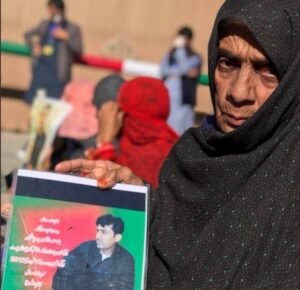The Durand Line Dilemma: Pakistan’s Colonial Hangover and Afghanistan’s Sovereignty Struggle

Khost Province, Afghanistan — Along the Durand Line. Photo: @AADIL for ADN
By A. Shafaq
In the arid mountains of South and Central Asia, the Durand Line slices through villages, valleys and kinship networks. Drawn in 1893 by British colonial officials, the 2,640-kilometre boundary was meant to define the limits of British India and the Afghan emirate. More than a century later, it remains one of the world’s most disputed frontiersو a colonial legacy at the heart of Pakistan and Afghanistan’s most combustible disagreements.
Named after Sir Henry Mortimer Durand, the line was negotiated between the British and Amir Abdur Rahman Khan of Afghanistan. The agreement granted Britain a security buffer but also split Pashtun tribal lands. When Pakistan emerged in 1947, it inherited the line under the doctrine of state succession. Islamabad regards it as an internationally recognised border; successive Afghan governments have never accepted it as permanent, calling it an imposed, time-bound accord.
This unresolved status feeds Afghan nationalism and Pashtun grievances, which view the line as a symbol of lost sovereignty. Afghan maps and constitutions have often left the border ambiguous, while Pakistani state maps show it clearly.
Pakistan’s Fence and Security Rationale
Since 2017, Pakistan has built a formidable two-layer fence, watchtowers and checkpoints along almost the entire Durand Line. Officials in Islamabad say the barrier is a defensive measure against cross-border militancy, narcotics smuggling and irregular migration. After a string of Taliban and Tehrik-e-Taliban Pakistan (TTP) attacks, Pakistani generals have portrayed the fence as non-negotiable national security infrastructure.
But to Afghans, Pakistan’s unilateral fencing represents a fait accompli on contested territory. Local communities complain of disrupted trade, restricted grazing routes and families divided by barbed wire.
Tensions have flared repeatedly. Afghan officials accuse Pakistani forces of firing artillery into border provinces like Kunar and Nangarhar, often hitting civilian areas. Pakistan says it targets militant sanctuaries and blames Kabul — now under the Taliban — for failing to rein in fighters. Each clash reinforces the perception in Afghanistan that Pakistan is eroding its sovereignty, while in Pakistan it reinforces fears of militant infiltration.
A Crisis of Legitimacy
The Durand Line dilemma is at once legal, political and human:
- Legal: Pakistan cites the 1893 Durand Agreement and the 1919 Treaty of Rawalpindi as proof the boundary is settled. Afghanistan argues no treaty after independence explicitly recognises the border and that colonial-era agreements are not binding on a sovereign Afghan state.
- Political: Afghanistan’s refusal to recognise the line resonates with domestic audiences but complicates relations with its most vital transit partner. Pakistan’s fence, meanwhile, signals its intent to close what was historically a porous frontier.
- Human: Millions of Pashtuns straddle both sides. Families, markets and seasonal migrants face new visa regimes, deportations and checkpoints. What was once a cultural continuum is becoming a hardened security zone.
The Durand Line dispute is no longer only bilateral. China’s Belt and Road corridors, Indian aid projects in Afghanistan, refugee flows into Iran and Pakistan, and NATO’s past military footprint all make the border an arena of wider competition. Any flare-up can quickly ripple beyond the Hindu Kush.
Possible Paths Forward
Diplomats and analysts propose several steps to reduce tensions:
- Joint Border Commission to demarcate disputed sectors with international observers.
- Confidence-Building Measures, such as trade corridors and cross-border family visits, to soften the fence’s social impact.
- Security Dialogue between Islamabad and Kabul on militant groups, with verifiable mechanisms rather than artillery strikes.
- Legal Clarification through a new treaty or memorandum that recognises current realities but protects Pashtun communities.
Whether either side has the political will is another question. Pakistan’s security establishment shows little appetite for compromise, while Afghanistan’s Taliban government uses anti-Durand rhetoric to rally nationalist support at home.
The Durand Line represents the unfinished business of empire: a colonial boundary inherited but never fully legitimised. Pakistan’s unilateral fencing and periodic shelling have hardened Afghan resistance, while Afghanistan’s refusal to recognise the line ensures its contested status endures.
Unless the two neighbours find a formula that balances security with sovereignty — and gives voice to the border’s residents — the Durand Line will remain less a boundary than a wound, deepening mistrust and instability in a region already on edge.
A. Shafaq (pseudonym) is a researcher and lecturer at one of the private universities in Kabul.
Note: The contents of the article are of sole responsibility of the author. Afghan Diaspora Network will not be responsible for any inaccurate or incorrect statement in the articles.








